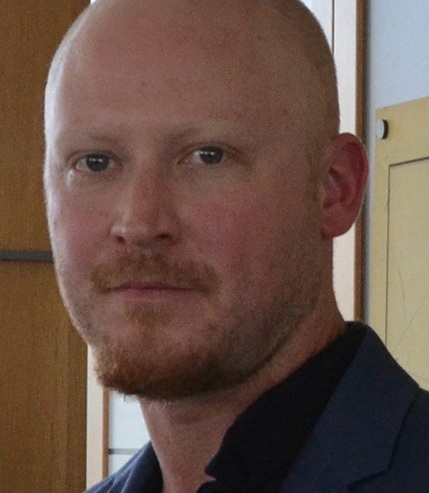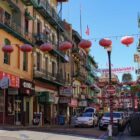We recently caught up with Nate Kauffman, a landscape architecture and urban planning consultant whose work focuses on sea level rise adaptation, at a presentation at the Exploratorium on how cities can better manage development along the waterfront. The talk’s setting was apt: The science museum focused on children’s education sits on stilts just a few feet above the San Francisco Bay along the Embarcadero, a facility almost sure to be flooded within 100 years.
Kauffman, who does 3-D visualizations of the bay for a startup called Owlized, the San Francisco Estuary Institute, the Bay Institute, the California Coastal Conservancy, Bay Nature Magazine and other local groups, is now focusing more on public education and outreach to warn leaders about the need to get an early start on environmental change that is expected to accelerate in coming decades. This is a lightly edited version of our conversation.
Public Press: What are some of the things that could happen to the Embarcadero as water encroaches?
Nate Kauffman: On a king tide, even today, you will see water lapping up onto the Embarcadero. When it becomes a problem for drivers, people are going to start hearing a lot more about it. But what is probably going to happen is we’re going to have a storm surge on top of one of those high tides and then the road will literally become impassable. The other major impact that everybody is dreading is that if we start getting that combined sewer and storm water outflow full of water, we’re going to have raw sewage in the streets. We’re going to have people’s toilets backing up and folks are not going to like that for long.
What are the challenges you see coming for Mission Bay?
I call Mission Bay “the low-hanging fruit that was half rotten,” because not only has San Francisco decided to clear development for enormous projects like the new Golden State Warriors arena and the hospital down there, but there was no comprehensive strategic plan for how to deal with floodwater and rising tides. So I really think at this point we’re looking for ways to kind of cram a fix — reverse-engineer one back into a broken system. And I think it’s really unfortunate, because we’ve essentially created a public nuisance by wanting to attract people to an area that’s going to be highly inundated in the future.
What are the best solutions you see for how to prepare for these problems?
The goal is, you get the critical infrastructure out of the way. It’s very easy to elevate architecture. It’s very easy to elevate buildings, but if your roads and your power and your sewer and your gas line are in the ground, that’s a dangerous place to be when there’s saltwater also.
What are your thoughts on the recent San Francisco Bay Area Planning and Urban Research Association (SPUR) report commissioned by the city to present solutions for sea level rise in these areas we’re talking about? Do you think that the ideas in there are the most imaginative ones available to us?
I have a lot of the respect for SPUR as an agency. I thought that that particular report was very sloppy, and I did not think that it included the most innovative or well-articulated, cutting-edge concepts. I think as a broad framework for sketching out some of the big ideas it did a decent job, and I also respect the difficulty in releasing a report like that that is not intended to be prescriptive. It is really trying to generate a conversation. But, yeah, I think they fell a little bit short on some of the design solutions proposed.
Do we need a moratorium on development in these areas until we figure this out? Or do you think that there is perhaps a way to keep building but also protect it?
I think living with water is really the future. And that means getting wet sometimes. That means streets getting wet sometimes. That means the ground floor of your building gets wet sometimes and that’s not the end of the world. Moreover, until we make peace with that, we’re not going to be able to leverage the development and developer resources to pay for those projects. And until we rethink the institutional relationships between developers that are raking it in and what gets paid for in the public realm, we’re going to have a massive problem.
Does sea level rise have to be our enemy?
The architect half of my brain says that every challenge is really an opportunity. And I think sea level rise is a major opportunity for us to rethink how we live, and what we intend our legacy for the future to be. I really do think that the leaders of today are going to be absolutely crucified by history for their inaction, for their ignorance, their intransigence, and their bowing to basically the inertia of the generations that came before them. I think we need really, really bold, visionary leadership that’s not afraid to step on people’s toes, because if we don’t start testing and trying progressive and controversial things to build a better bay, we’re hosed.
Further reading:
- Continuing coverage of sea level rise
- San Francisco Public Press summer 2015 cover story










